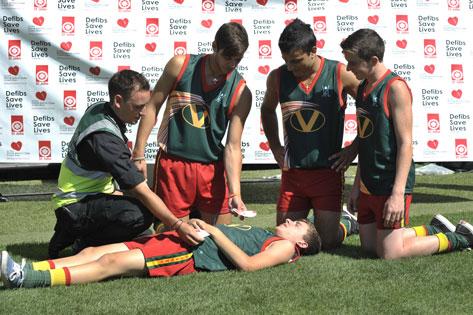Nathan Prince, 17, was bumped in the chest while jostling for position and suffered cardiac arrest during a game between Bacchus Marsh and North Ballarat City, west of Melbourne, in August 2011.
Paramedics took up to 20 minutes to reach the boy, and he died in hospital 10 days later.
Nathan's father Ian Prince believes a defibrillator could have saved his son's life.
He welcomed St John Ambulance Victoria's decision to donate 100 defibrillators - and training in how to use them - to grassroots sporting clubs across the state in coming months.
"I don't want to see people go through the same situation that we went through with Nathan," Mr Prince said on Wednesday.
Remembering his son - an apprentice carpenter - as a motivated, caring perfectionist, he said St John's $385,000 gift should encourage all parents to make sure their kids' sporting clubs had one of the life-saving units.
"We wish (defibrillators) were around a year ago. We don't know 100% whether it would've made a difference or not, but we'll never die without that question in our mind," he said.
"I would never have thought my son would die of a cardiac arrest, and I think it's important to get that message out there to other parents: prepare for any situation, and encourage your clubs if they haven't got a defibrillator already to ensure that they do get one so this doesn't happen to one of the kids involved in their sporting club."
Defibrillators work to restore normal heart rhythm via an electric shock.
AFL legend Doug Hawkins, who coached Nathan, said the teen had been "like a second son".
"I don't know the answer, we don't know the answer, but if we'd had a defibrillator at the ground on that day, this could be a different (story) for all of us," he said.
St John chief executive officer Stephen Horton said the organisation believed 2300 sporting clubs across Victoria needed a defibrillator on site, and it planned to provide the devices to all of them by 2014.
Figures showed cardiac arrest victims had almost a 90% survival rate when treated quickly with an on-site defibrillator, compared with just five per cent without one, he said.








 Agree (0)
Agree (0) Disagree (
Disagree (







__small.png)










